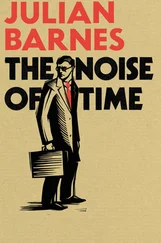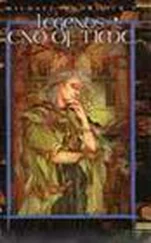It is time to take stock once more. First, we muster the interpretations of quantum mechanics. How do they look in the light of Bell’s analysis? What appearances do they save and how well do they do it? There are two minimum requirements of an interpretation – it must explain why we see just one world (Einstein’s Moon problem) and it must explain why we think it has a history. The latter is the harder task. However, it may be important not to ask for too much. To save the appearances, we do not have to create a unique history: we need only explain why there seems to be a unique history. That was Everett’s insight. If we can stand back from our parochial prejudices, a theory which can achieve that is already little short of miraculous.
Except for many-worlds variants, all the interpretations strive for the severe criterion of only one history. They were created for that and all achieve it by brute force. History is created by repeated strangling of the wave function (Copenhagen and physical collapse) or by adding incongruous extras: the so-called hidden variables. The German doppelt gemoppelt means messing things up by doing them twice over. In their anxiety to recover a unique history, the proponents of these interpretations crudely impose one history on a theory that can already create many histories which are autonomous – and hence each unique in our experience – by a beautiful natural mechanism. Hamilton’s discovery makes it inescapable that histories are latent in the quantum formalism. It is just a matter of coaxing them out into the open.
BELL’S ‘MANY-WORLDS’ INTERPRETATION
From his discussion of alpha-particle tracks, Bell turned to a remarkable cosmological interpretation of quantum mechanics. It makes essential use of the notion of time capsules and is therefore very similar to the interpretation I shall present in the final chapter. Bell saw it as a way of retaining Everett’s idea that the wave function never collapses without proliferating worlds.
Bell claimed that the really novel element in Everett’s theory had not been identified. This was ‘a repudiation of the concept of the “past”, which could be considered in the same liberating tradition as Einstein’s repudiation of absolute simultaneity’. Obviously, something exciting is in prospect, and Bell does not disappoint. He looked for the quantum property that enabled Everett to make his many-worlds idea plausible, and pointed out that the accumulation of mutually consistent records is a vital part of it. This recognition had led Bell to his analysis of the formation of alpha-particle tracks, which have the obvious interpretation that they are records of alpha-particle motion. He showed that ‘record formation’ is a characteristic quantum property. At least under cloud-chamber conditions, the wave function concentrates itself at configuration points that can be called records. Although Bell did not use my term, such points are manifestly time capsules. He noted that Everett’s interpretation could not even be formulated were it not for the wave function’s propensity to find them.
He then attacked head-on the conventional notion of history inherited from classical physics as a continuous path through configuration space. This might make sense if, god-like, we could see all time and the configuration space with history highlighted as a path in it by a ‘thread’ or ‘paint’. But our only access to the past is through records. As Bell says, ‘We have no access to the past. We have only our “memories” and “records”. But these memories and records are in fact present phenomena.’ Our only evidence for the past is through present records. If we have them, the actual existence of the past is immaterial. It will make no difference to what we know. Hence ‘there is no need whatever to link successive configurations of the world into a continuous trajectory’.
His ‘Everettian’ interpretation is this: time exists, and the universal wave function ψ evolves in it without ever collapsing. Because ψ has the propensity to seek out time capsules, it will generally be concentrated on them. Real events are actualized as follows. At each instant of time, ψ associates a definite probability (the intensity of the blue mist in my analogy) with each configuration. At any instant, just one event is actualized at random in accordance with its relative probability. The higher the probability, the greater the chance of actualization. Since time capsules have the highest probabilities, they will generally be selected.
Sentient beings within them will possess memories and records that convince them they are the product of history. But this will be an illusion. In reality, the points realized at successive instants of time are chosen randomly and jump around in a wildly unpredictable manner in the configuration space. The sentient beings within the actualized points have memories of quite different histories. It is all very bizarre, though within each randomly selected time capsule the memories and records tell a most consistent story. Bell rejected his ‘many-worlds’ interpretation as too absurd:
Everett’s replacement of the past by memories is a radical solipsism – extending to the temporal dimension the replacement of everything outside my head by my impressions, of ordinary solipsism or positivism. Solipsism cannot be refuted. But if such a theory were taken seriously it would hardly be possible to take anything else seriously. So much for the social implications. It is always interesting to find that solipsists and positivists, when they have children, have life insurance.
This is all very entertaining – and I too have children and life insurance – but these are just the kind of ad hominem quips that were tossed at Copernicus and Galileo. I do believe that Bell came close to a viable cosmological interpretation of quantum mechanics, and should have kept faith with his title (‘Quantum mechanics for cosmologists’). But he left the cosmologists with nothing. Later he gave warm support to one of the theories in which wave-function collapse is a real physical process. In it, the propensity of the quantum-mechanical wave function to find time capsules plays no role. History is created by a succession of actually realized states. It is there with or without any record of it.
From the way Bell wrote in 1980, either he was unaware of the Wheeler-DeWitt equation and the possibility that the universal wave function is static, or he dismissed this without mention. It would be interesting to know how he would have reacted to the idea – he seems to have had a somewhat Newtonian notion of time. Sadly, he died several years ago, so we cannot ask him. I regret this especially since his 1980 proposal is very close to mine in two of its three main elements. He may have believed in time, but his emphasis on memories and records and their rather natural occurrence in the quantum context are valuable support for me. So are his views on ontology and psychophysical parallelism. This is the third common element.
In discussing Everett’s theory, I mentioned the so-called preferred-basis problem. This arises from transformation theory: a quantum state simultaneously encodes information about mutually exclusive properties. Viewed one way, it gives probabilities for particle positions; viewed another, it gives probabilities for their momenta. It is impossible to extract this information simultaneously and directly by, so to speak, ‘looking at the system’. We must let the system interact with instruments. Depending on how the instruments are arranged, we can extract information about either the positions or the momenta, but not both at once. The ambiguity becomes especially acute if the instruments are treated quantum mechanically. We cannot say what state they are in or what they are measuring.
Читать дальше












